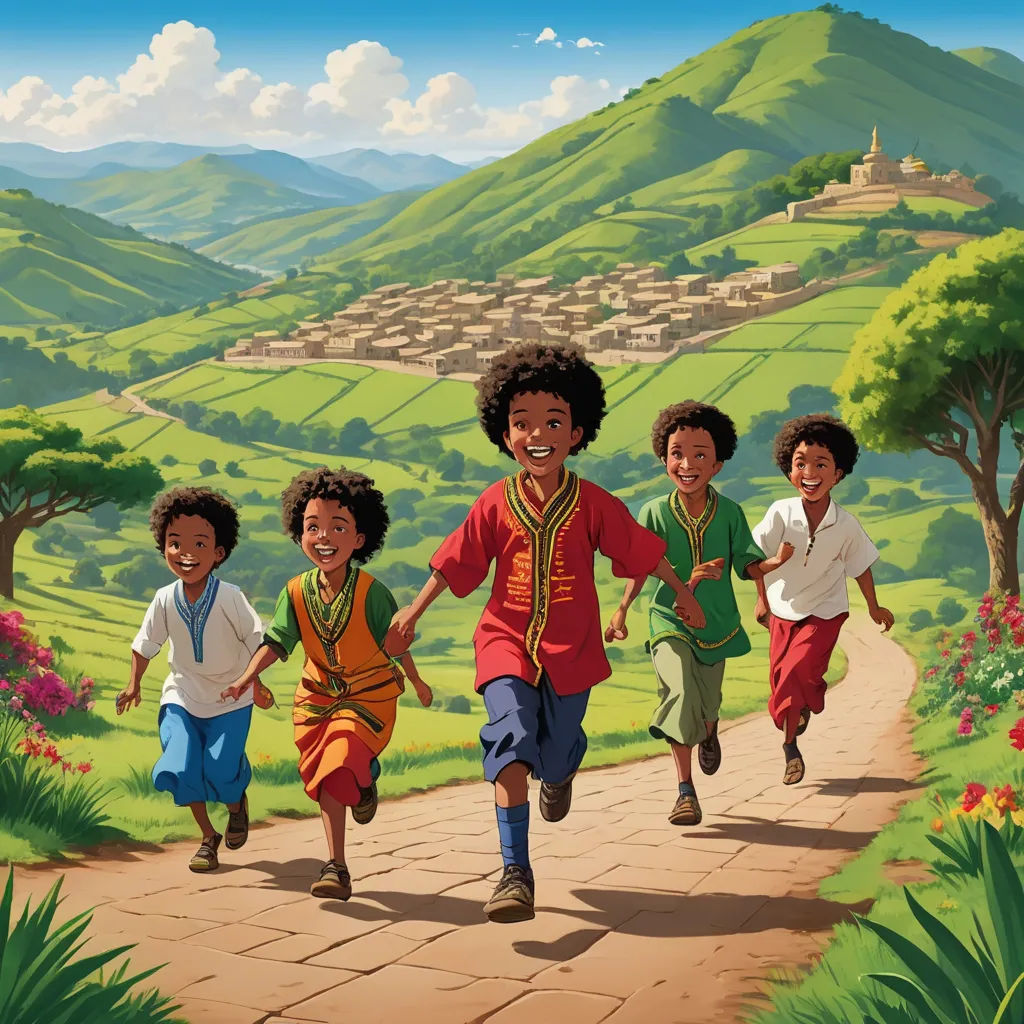
Mesob Hopscotch
By meronkebede12

04 Feb, 2024

In the warm heart of Ethiopia, nestled among verdant hills, a group of children gathered. Laughter echoed across the landscape as they prepared to play a traditional game, "Mesob Hopscotch."
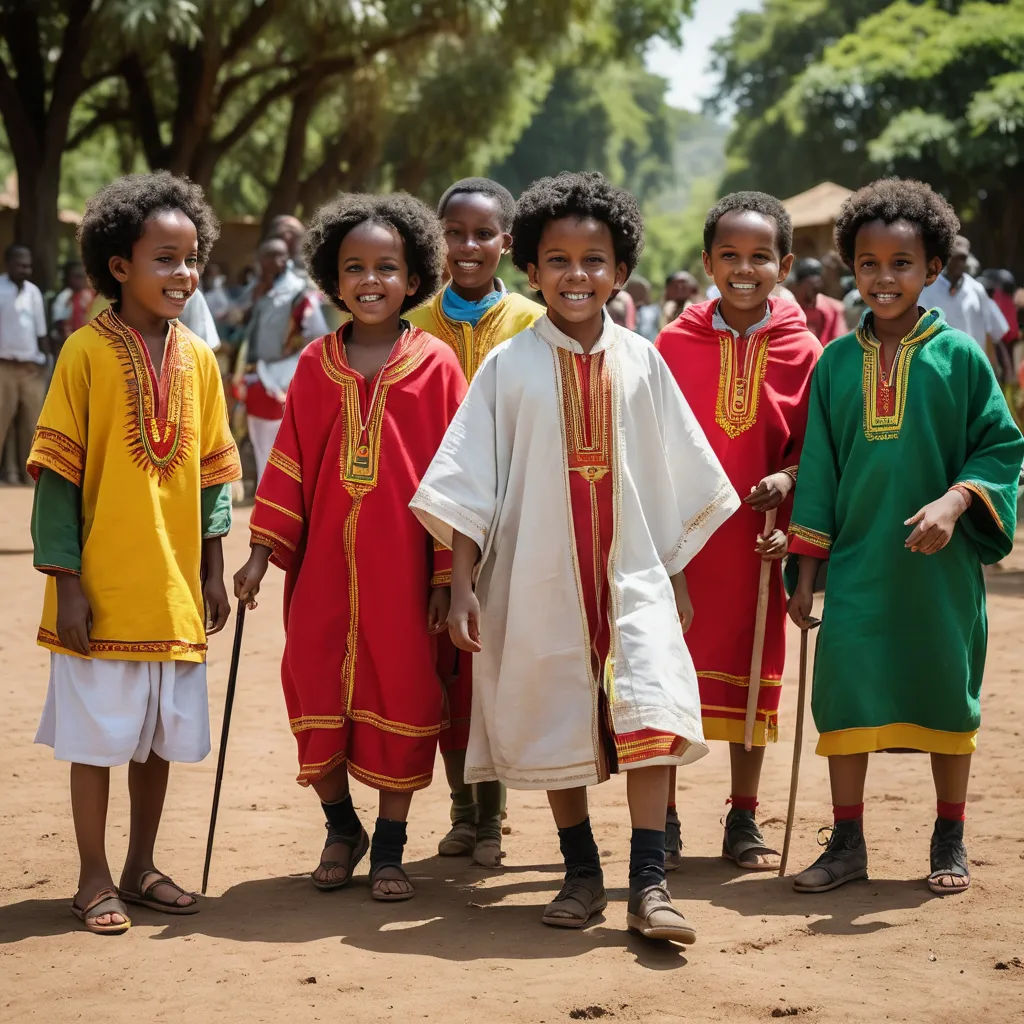
With chalk in hand, the eldest child, a boy named Tesfaye, began to draw a large grid on the ground. The squares were numbered from one to ten in Amharic numerals.
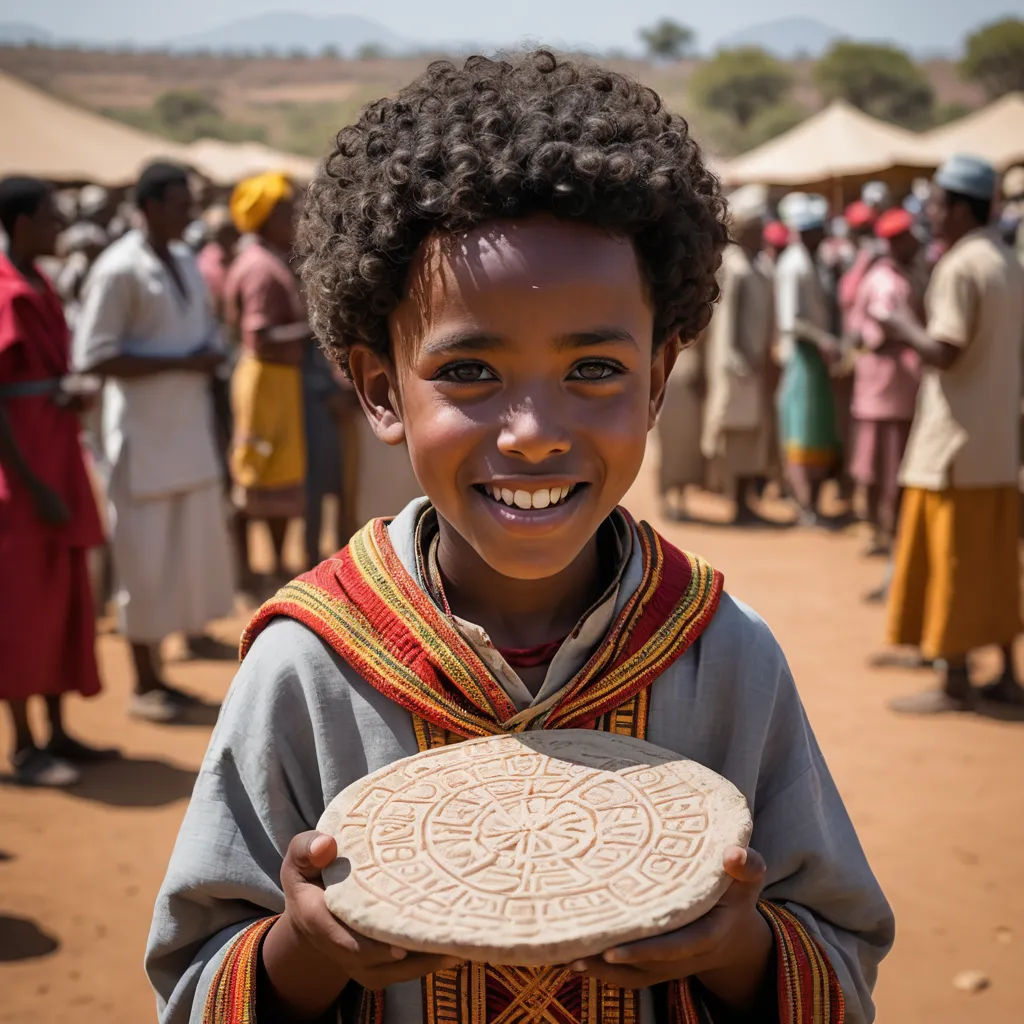
Tesfaye finished the grid and picked up a flat stone, presenting it as the game's playing stone. It was the perfect representation of the injera, the beloved Ethiopian bread.

With a firm throw, Tesfaye tossed the stone into the first square. It landed perfectly, earning cheers and claps from the other children.

Tesfaye took a deep breath, hopped over the first square, and began his journey across the grid. His focus was intense as he navigated the game's challenges.
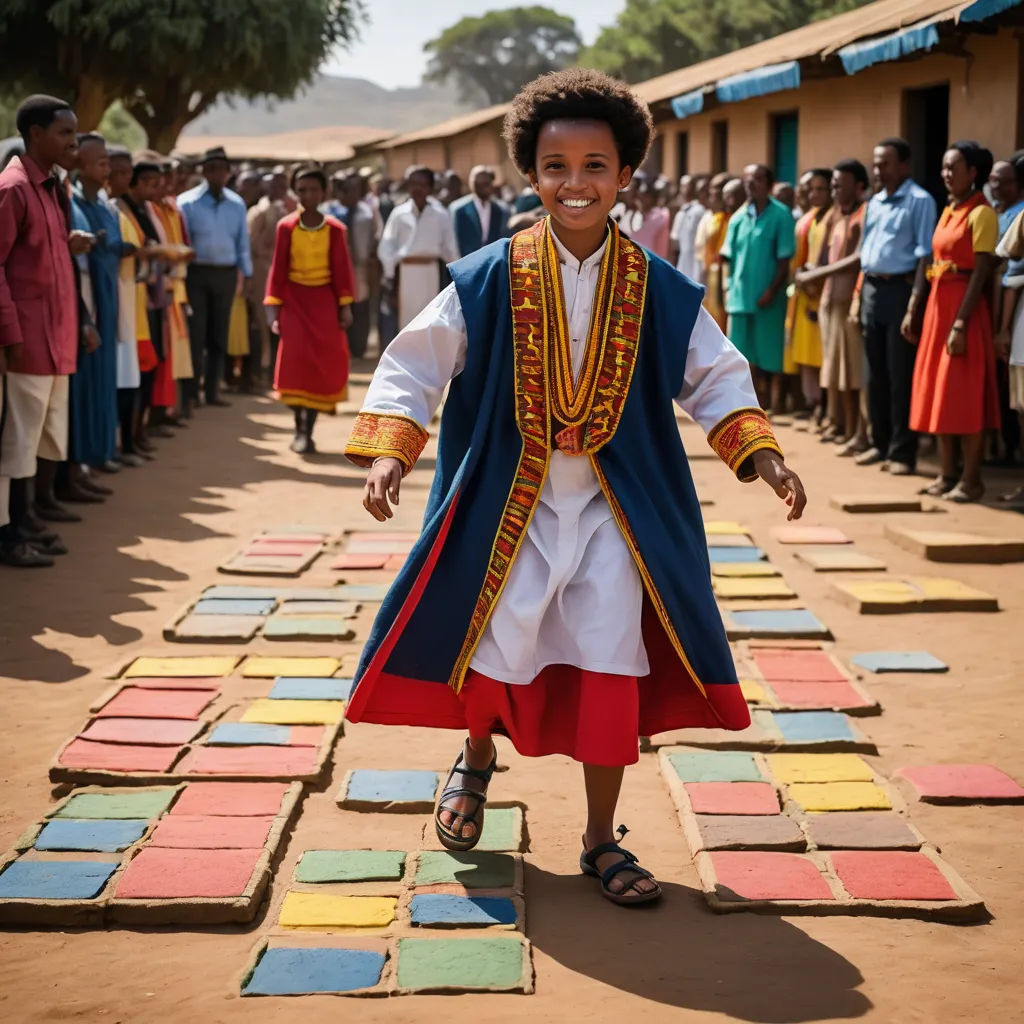
As he hopped, he carefully avoided the lines and the square with the stone. His feet were nimble, his balance commendable. The children watched in awe.

Reaching the end of the grid, Tesfaye turned around and hopped back, picking up the stone without losing his balance. The children erupted in cheers.
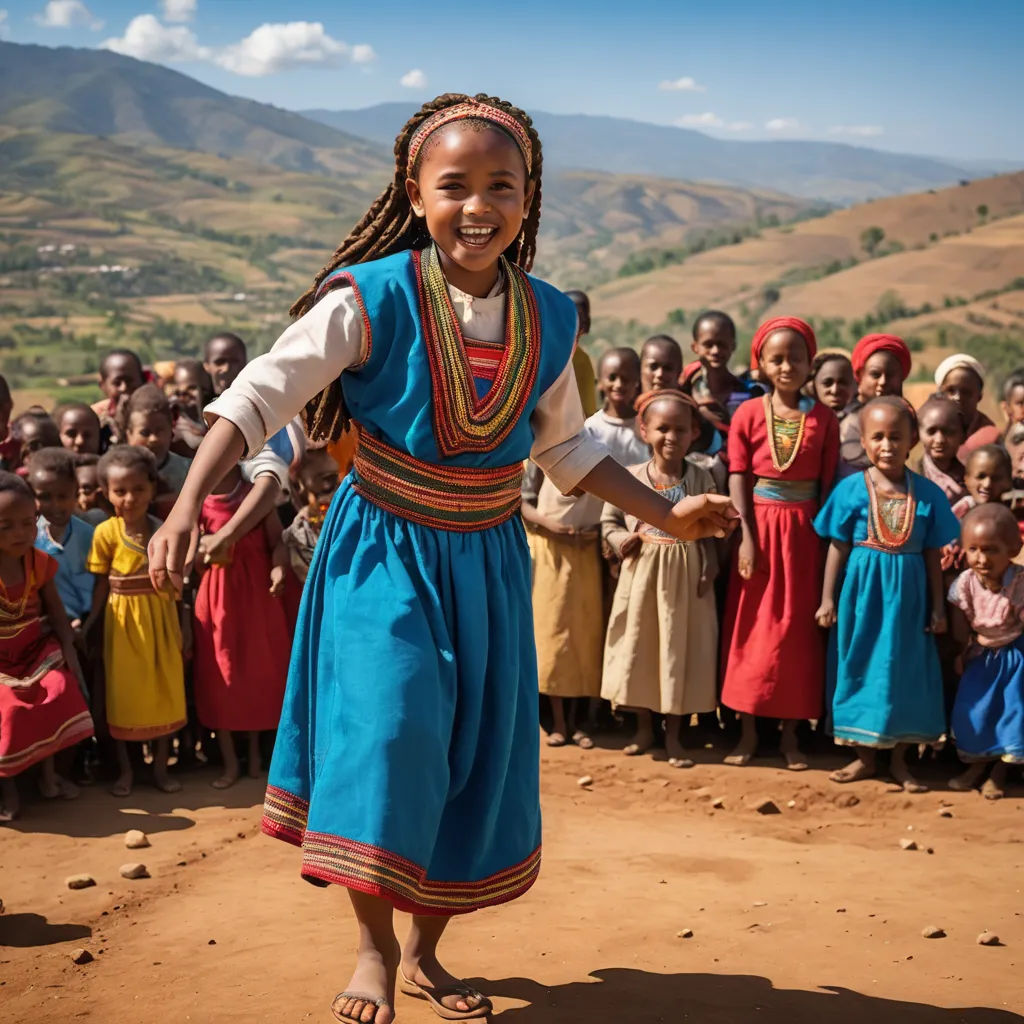
Selam, a younger girl with bright eyes, stepped up next. She held the stone tightly, aiming carefully before tossing it onto the grid.
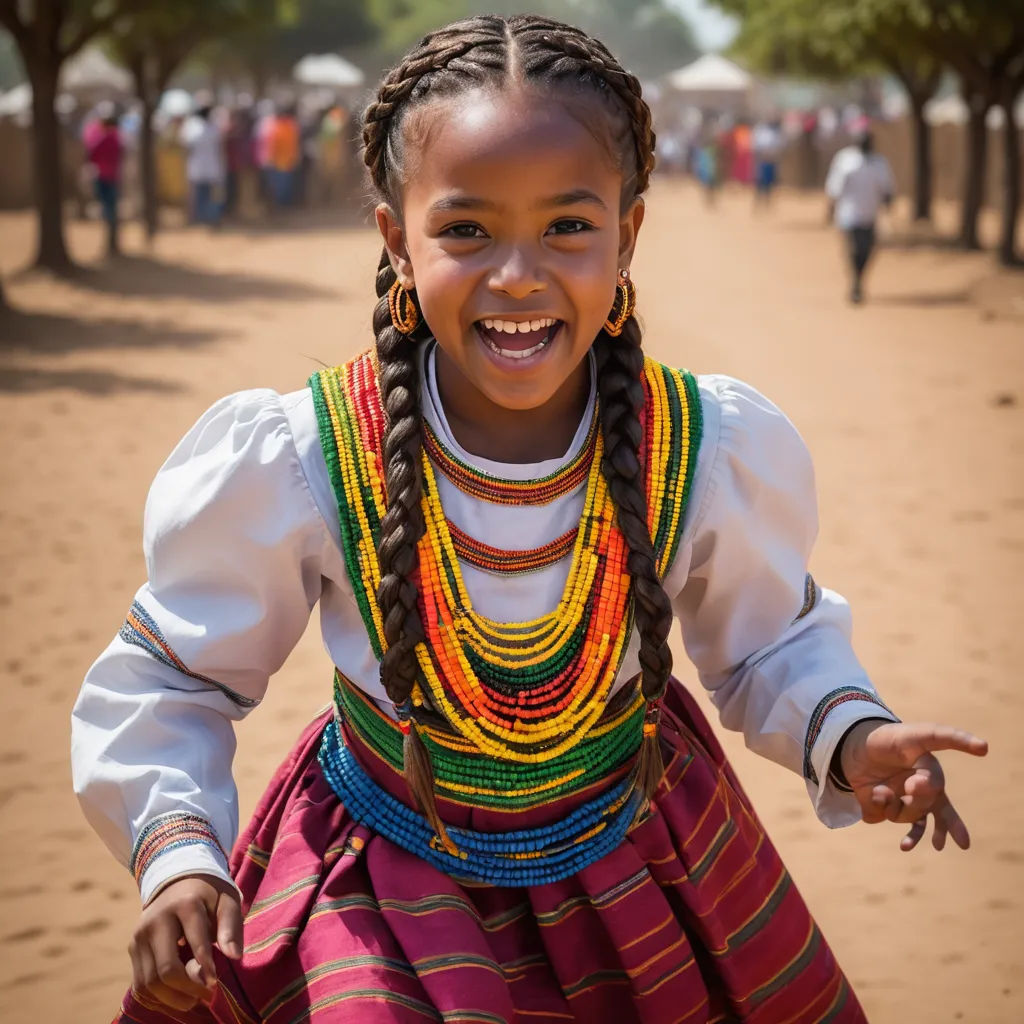
Selam hopped through the grid with a grace beyond her years, her braids swinging in rhythm with her movements. She was clearly a natural at Mesob Hopscotch.
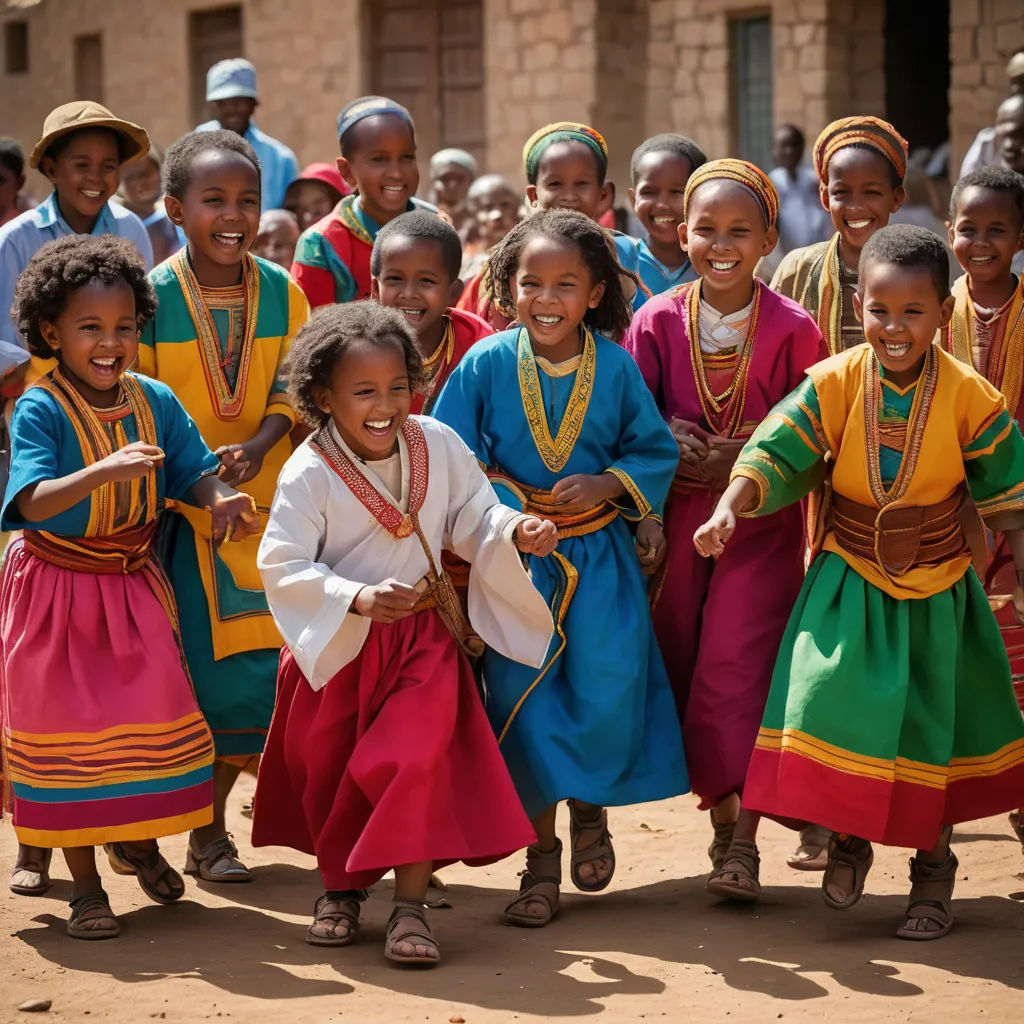
The game continued, with each child taking turns, tossing the stone, and hopping through the grid. The air was filled with laughter, cheers, and friendly competition.

The sun began to set, casting a golden glow over the hills and the playing children. The game had brought them together, strengthening their bond.

As the last rays of the sun disappeared, the children gathered around the winner, Selam. She beamed, her eyes shining with pride and joy.

Tesfaye, the runner-up, was the first to congratulate her. He clapped her shoulder with a proud smile, accepting his defeat gracefully.

They all cheered for Selam, the new Mesob Hopscotch champion. She was lifted onto their shoulders, her victory celebrated by all.
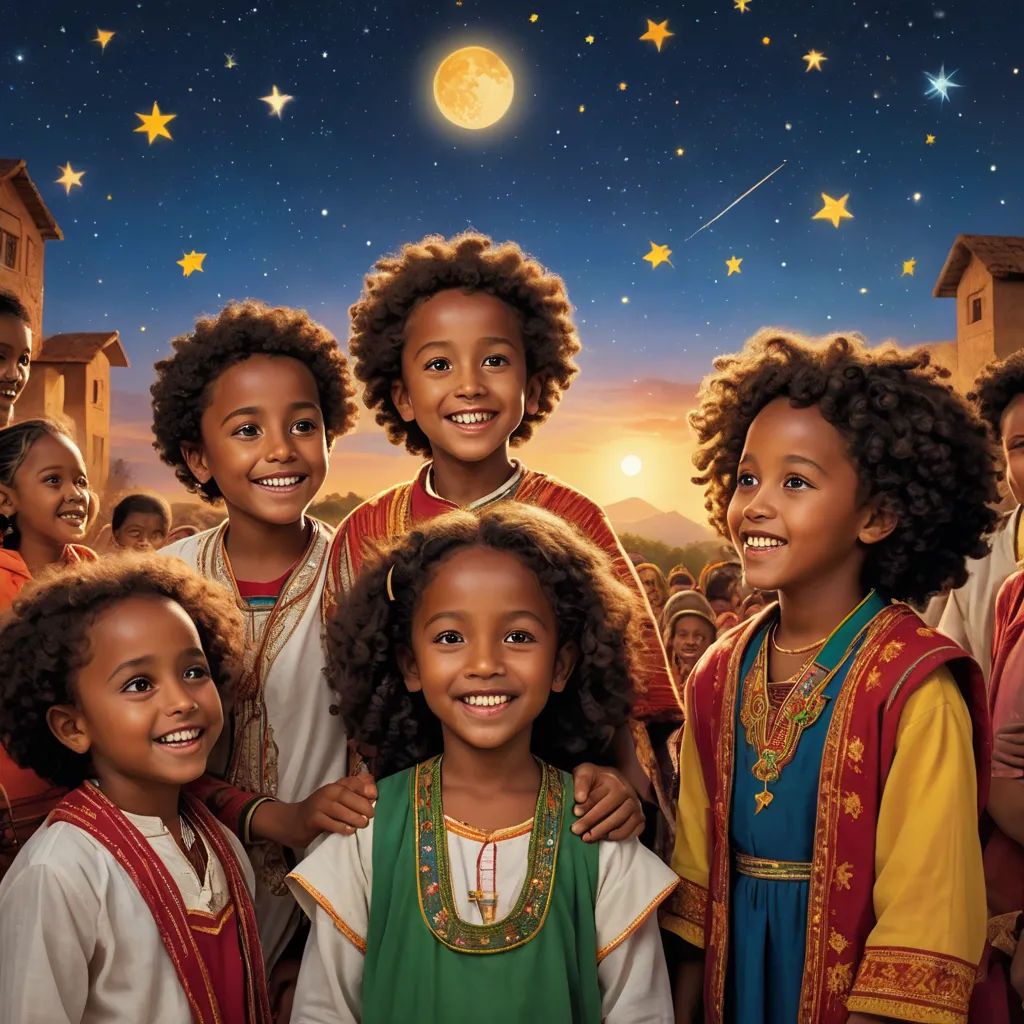
As the stars began to twinkle in the darkening sky, the children started to disperse, their hearts full of joy and their minds filled with memories of the day.
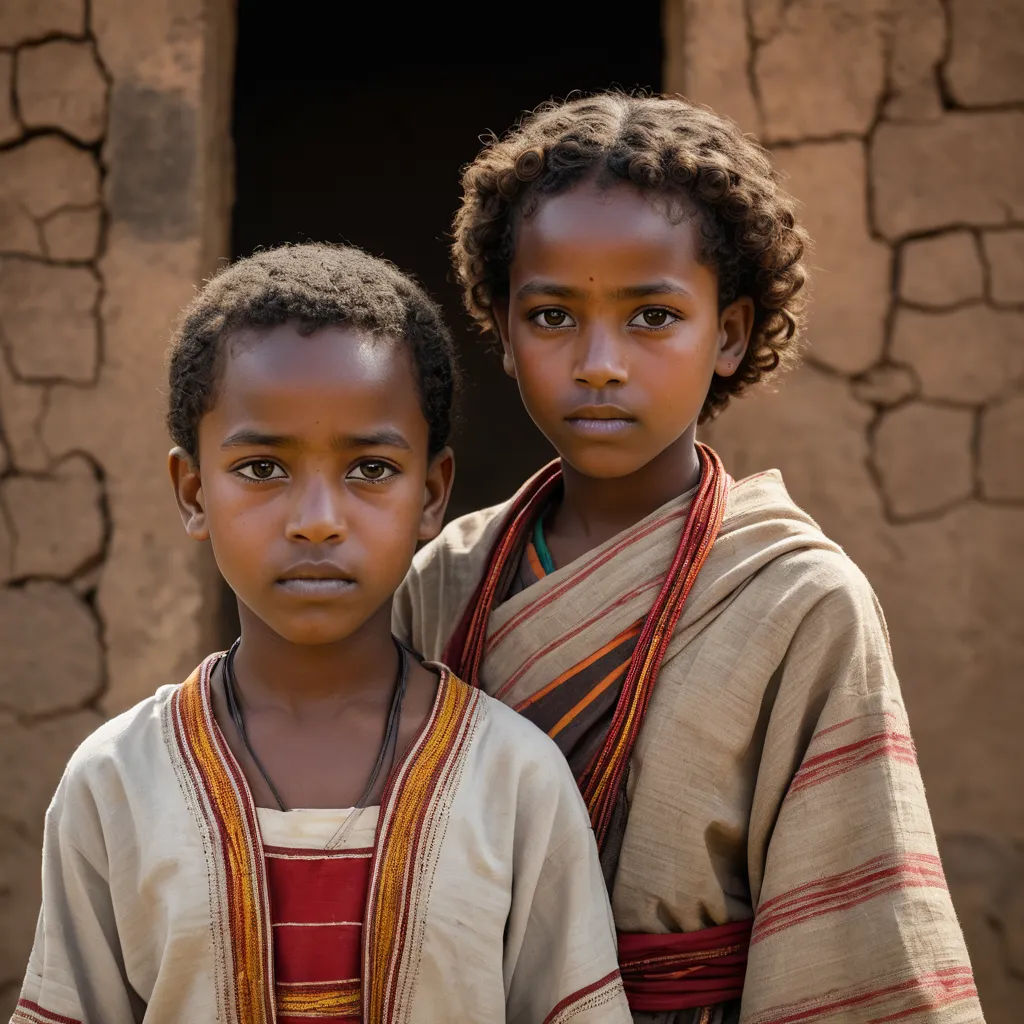
Tesfaye and Selam were the last to leave. They looked at the faded grid, their hearts filled with the spirit of the game and the joy it brought.
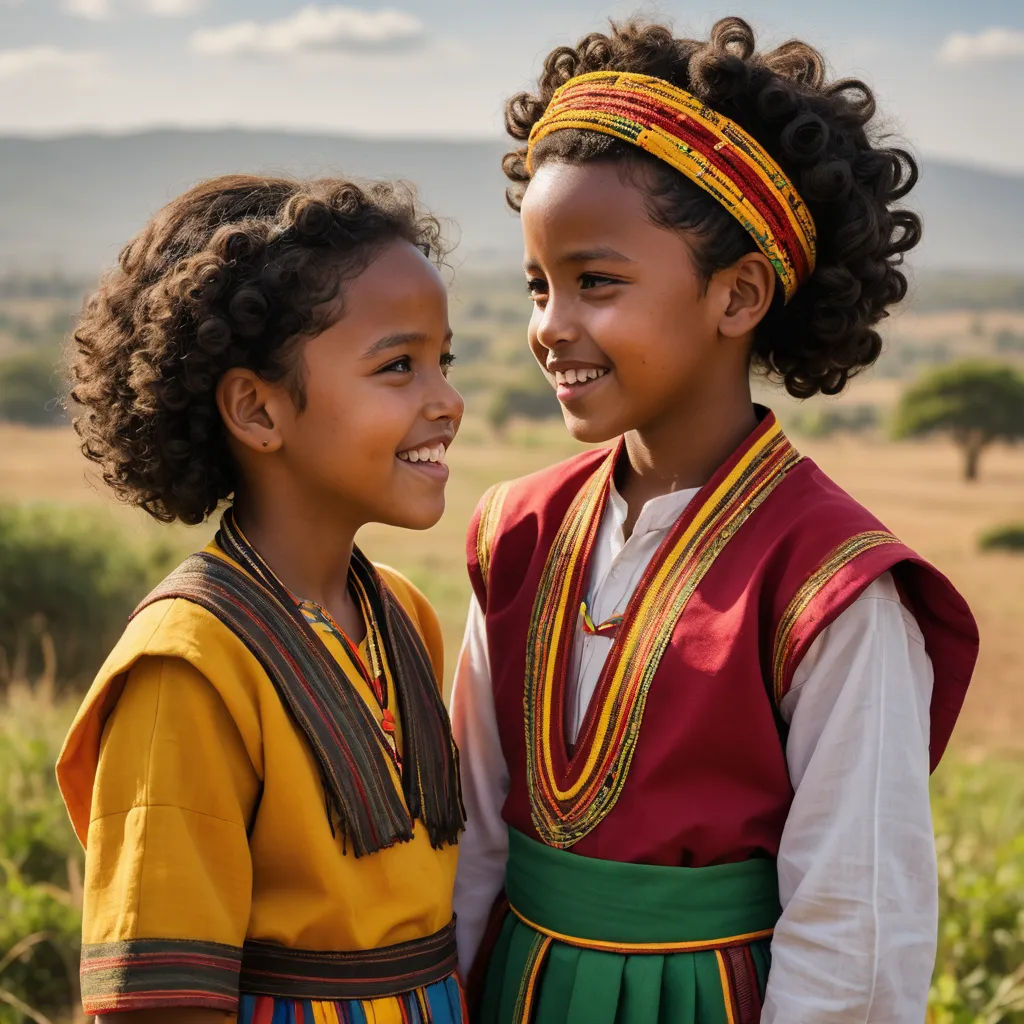
"Tomorrow, we'll play again," Tesfaye said, his eyes shining with anticipation. Selam nodded, her smile matching his enthusiasm.
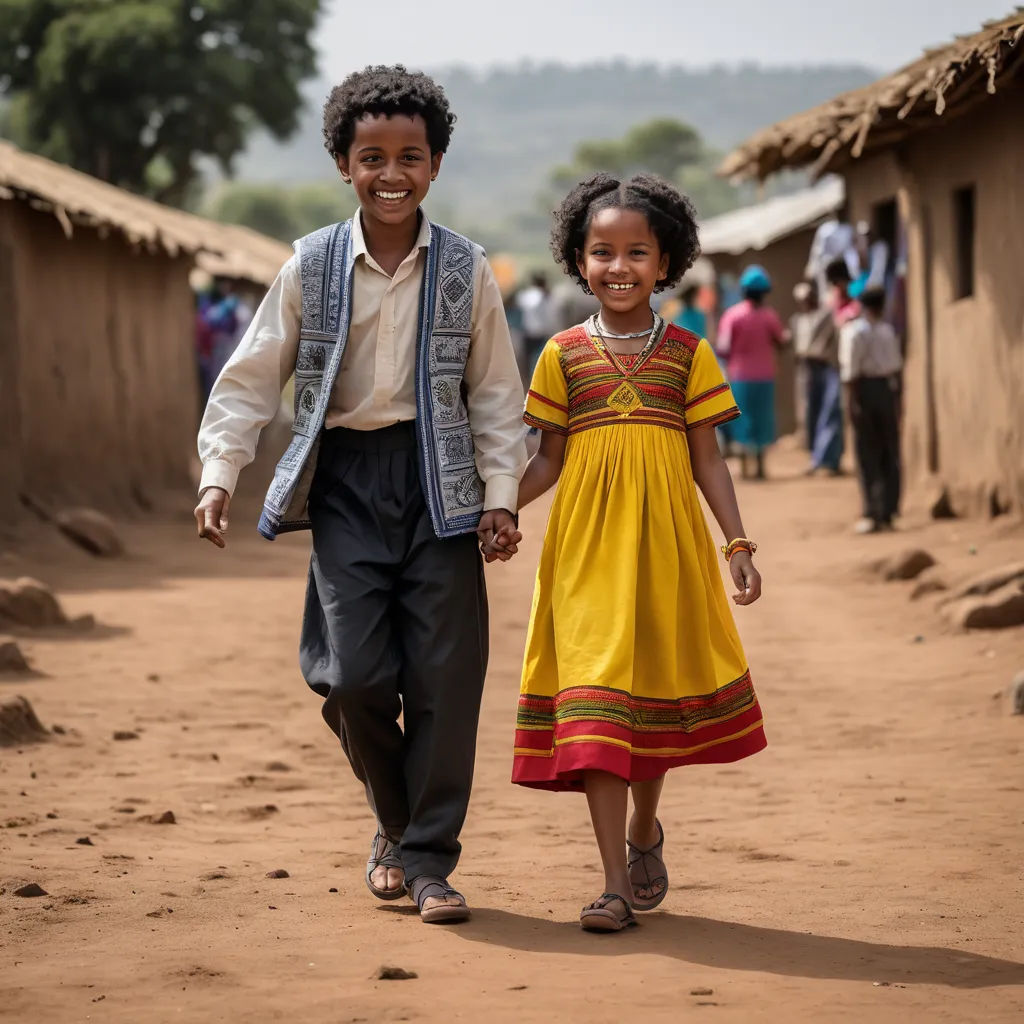
As they left the playing field, the spirit of Mesob Hopscotch lingered, a testament to their camaraderie, their culture, and the joy of being a child in the heart of Ethiopia.
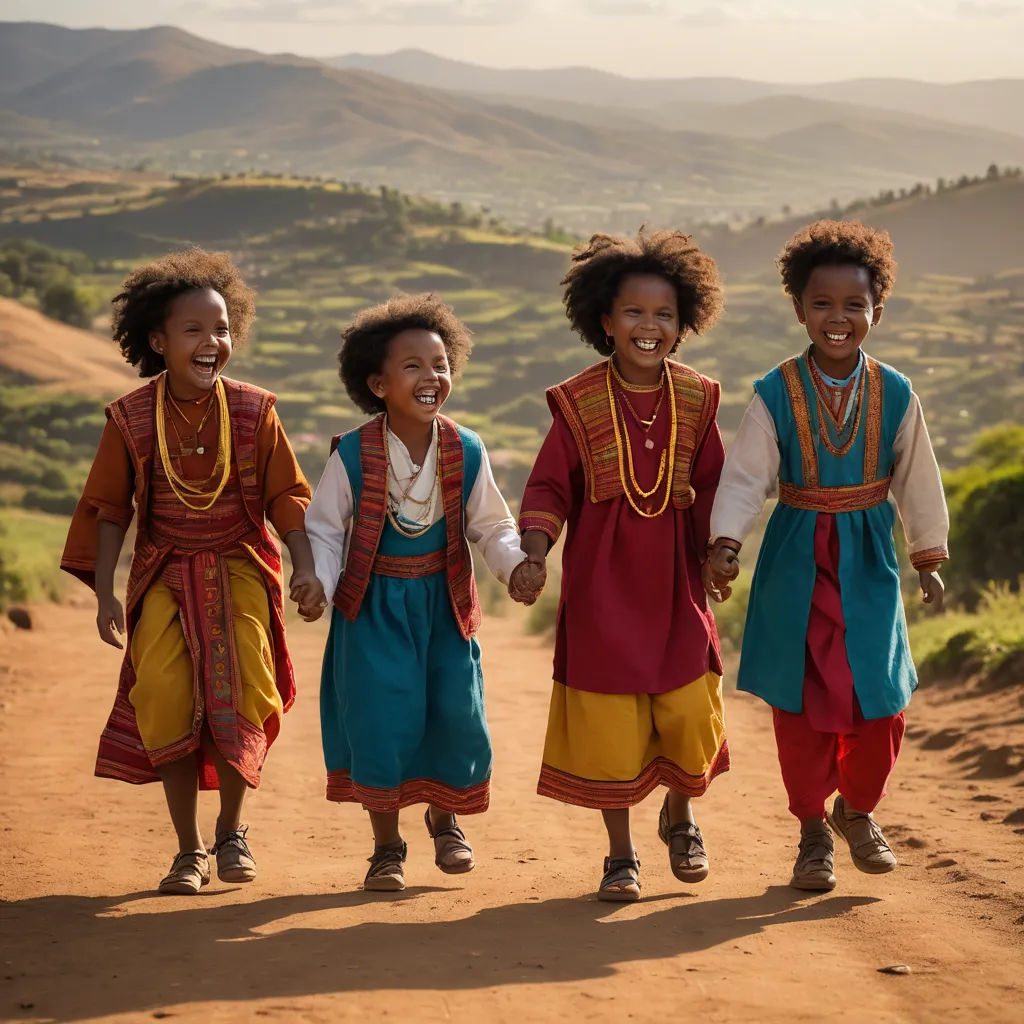
The hills echoed with their laughter, the memory of the game imprinted on the land. Mesob Hopscotch was more than a game; it was a celebration of friendship and culture.
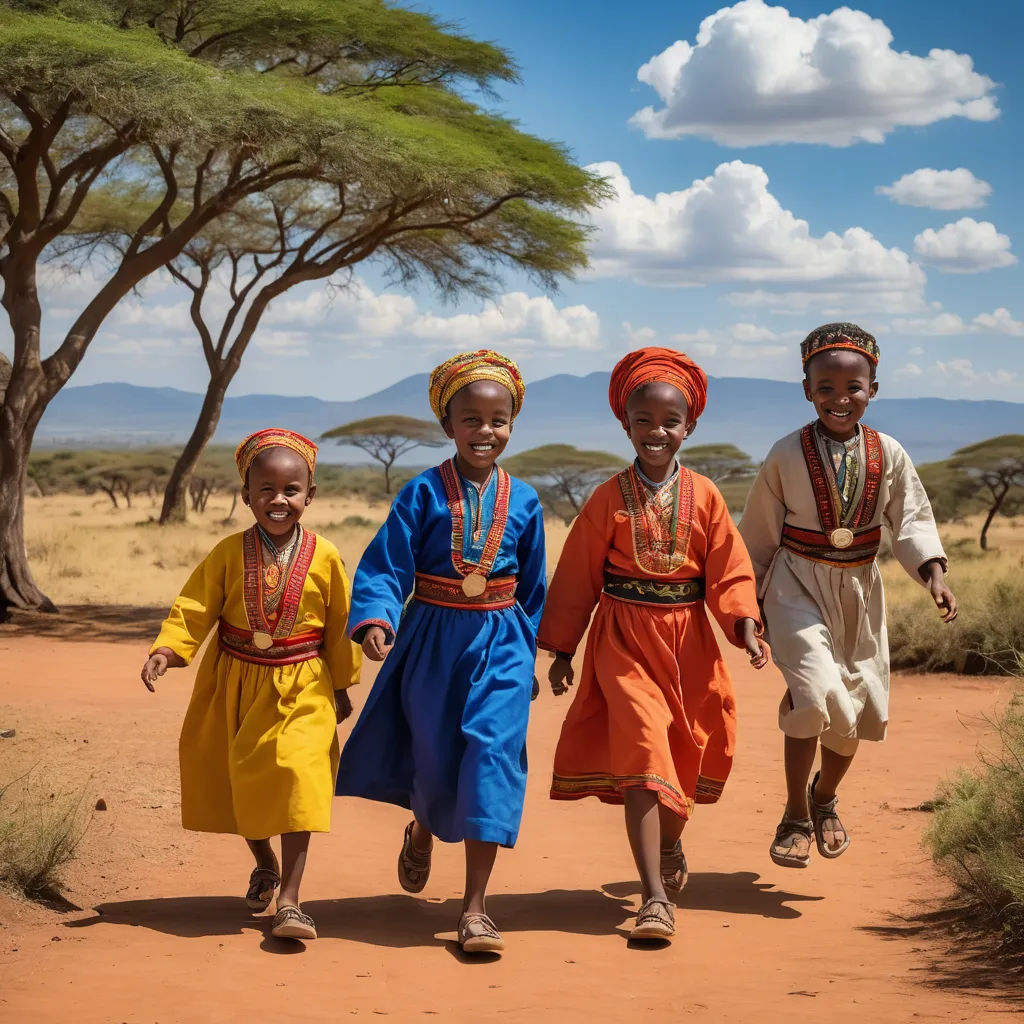
And so, under the wide African sky, the tradition of Mesob Hopscotch lived on, passed from one generation to the next, a cherished part of their heritage.

The game of Mesob Hopscotch was more than a pastime for the children; it was a symbol of unity, strength, and the vibrant Ethiopian culture they were proud to be a part of.
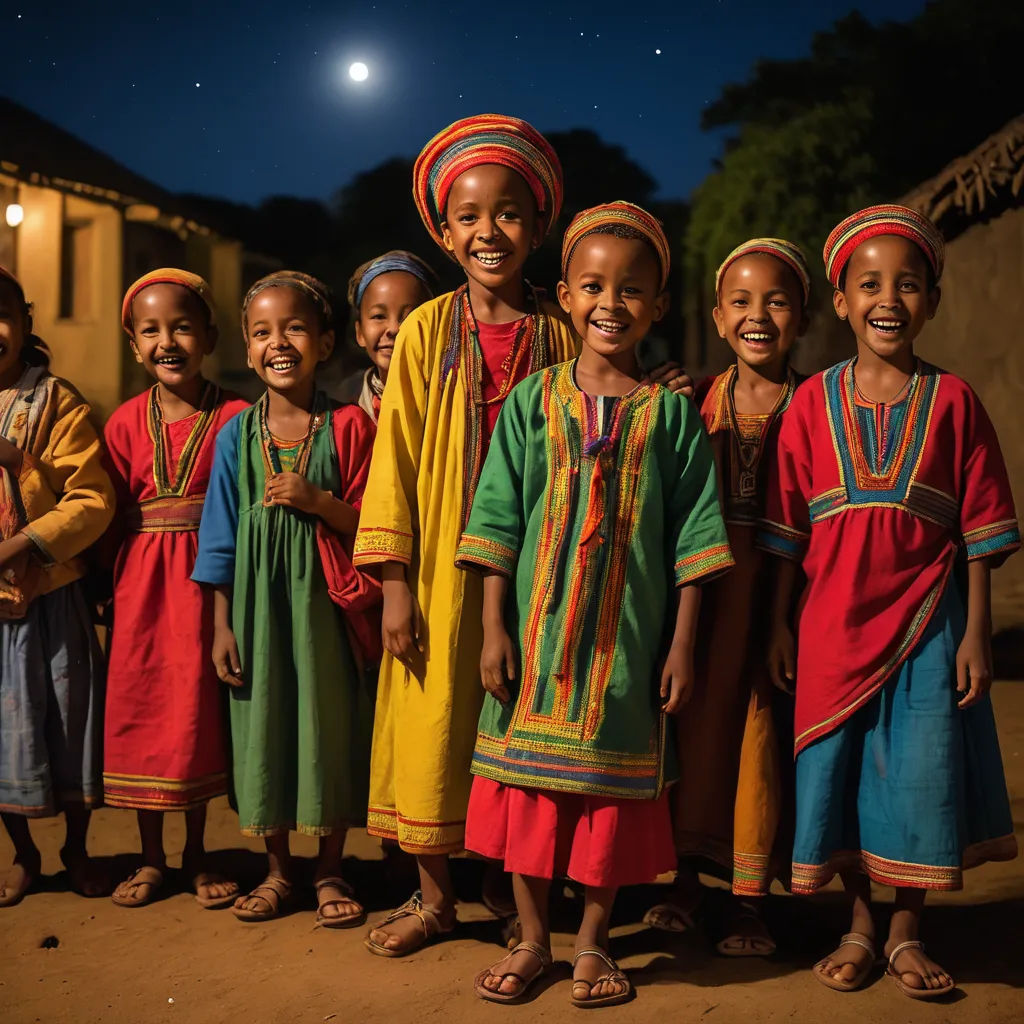
As the night settled, the echoes of their laughter and the memories of the game lingered, a beautiful reminder of the day spent playing Mesob Hopscotch.
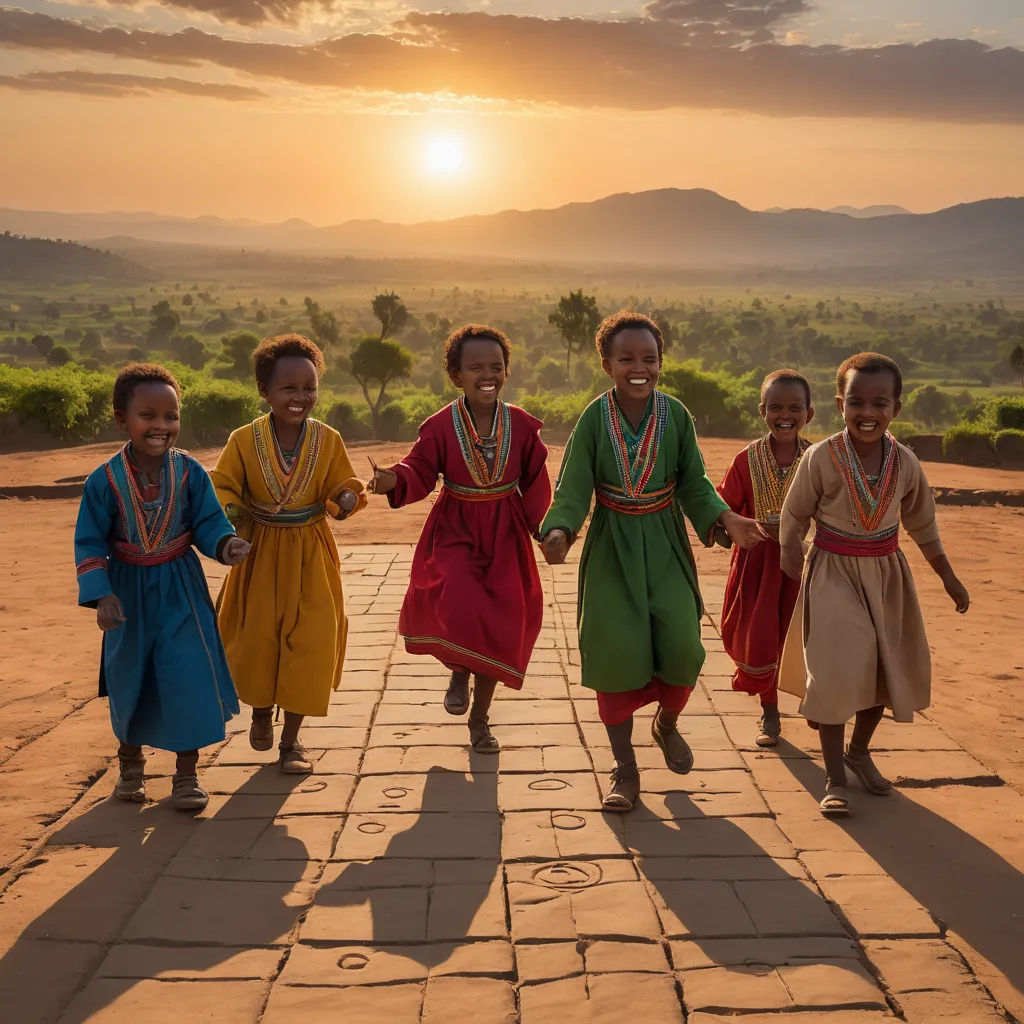
A new day would dawn, and the children would gather again, ready to toss the stone and hop through the grid, keeping the tradition of Mesob Hopscotch alive.
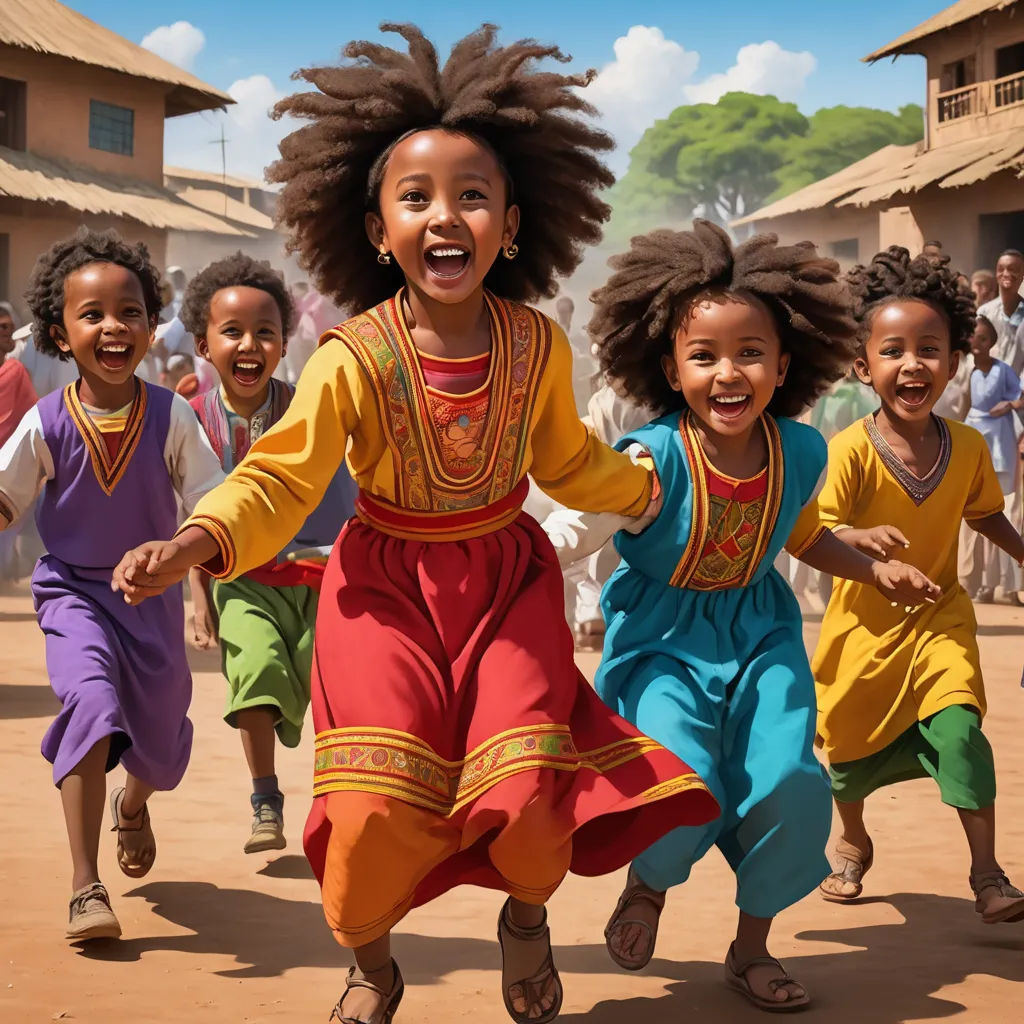
And so, the game continued, weaving stories of friendship, competition, and joy, a testament to the vibrant culture and the unyielding spirit of the Ethiopian children.

The hills would echo with their laughter, the grid would be drawn, and the stone would be tossed, for the game of Mesob Hopscotch was far from over; it was just beginning.